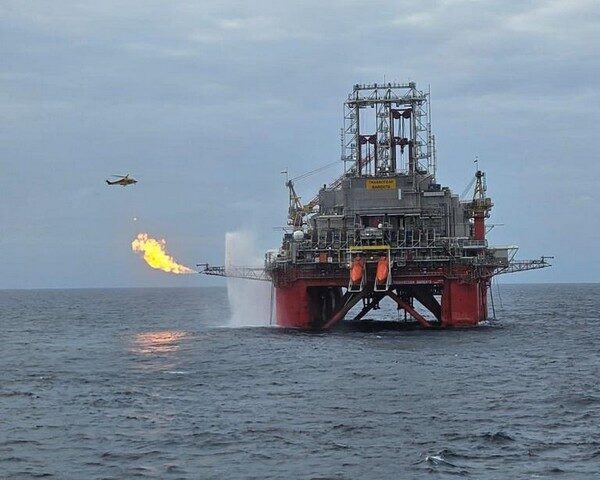The US and China reached an interim deal on tariffs, drastically reducing their reciprocal rates, the US also agreed on a deal with the UK, while potential ceasefire talks on the Ukraine-Russia front are getting closer.
These give hope that the world is edging towards a longer-term solution, that could take the brakes off energy.
Brent climbed to over $67/b following the interim tariffs agreement between the US and China, but abundant supply eroded gains.
The benchmark crude has now climbed back to $65/b on optimism over eased US-China trade tensions.
The U.S. Energy Information Administration expects Brent to average $66/b in 2025 and lower at $59/b in 2026.
The EIA also forecasts world oil consumption growth to slow over the next two years amid less economic activity.
The OPEC cartel of oil producers agrees, expecting a fall of 5% in 2025 and another 2% in 2026.
OPEC+ shocked markets by doubling supply hikes to 411,000 bpd in May and June, despite weakening demand signals. Saudi Arabia seems ready to trade short-term pain for long-term power.
In effect, the Saudi kingdom has signaled it can operate with lower oil prices. This could suggest a move toward producing more and expanding its market share.
OPEC’s decision had the effect of smoothing relations ahead of President Trump’s visit to Saudi Arabia, Qatar and the UAE between May 13-16 and perhaps contributed to its success.
Goldman Sachs expects expanded OPEC+ group of producers to pause output hikes beyond July as global economic conditions worsen.
‘Big Oil’ is bracing for the worst year since the pandemic as bumper profits dry up due to increased supply from OPEC+ and escalating trade tensions under Donald Trump.
OPEC said that the hydrocarbons sector needs $17.4 trln in investments by 2050 to meet rising demand, and to generate the additional 5 mln bpd needed on average every year to stay at the current overall supply levels.
OPEC also said that the International Energy Agency (IEA) is slowly backtracking on its peak oil demand by 2030 narrative, underscoring “the importance of data driving policy – not policy driving data.”
According to the FT, BP rivals are running the numbers on possible takeover of the struggling oil major. Shell, Chevron, ExxonMobil and TotalEnergies, as well as Abu Dhabi’s Adnoc are looking into this.
But Shell left it open, saying that it would rather buy back its own shares than bid for BP. Its CEO said, “right now, buying back Shell shares for us continues to be absolutely the right alternative to go for”.
Rumours that ExxonMobil is a possible key contender to takeover BP are increasing.
Global oil markets may face a looming supply crunch: just 25–30% of annual oil use is being replaced by new discoveries. As US shale peaks, Saudi Arabia and Venezuela may define the next era – one with fewer, more strategic swing producers.
The US EIA forecasts in its Annual Energy Outlook 2025 that US crude oil output will peak at 14mn b/d in 2027 and plateau into the early 2030s before declining. Shale oil output will hit 10mn b/d in 2027 before sliding to 9.33mn bp/ by 2050.
All eyes on US tariff deals
The US and China hammered out an interim tariffs deal in Geneva on May 11. The US will lower tariffs on Chinese goods to 30% from 145%, and China will reduce duties on US imports to 10% from 125%. This will be valid for three months to allow the two countries to reach a permanent deal.
The US Treasury secretary said “neither side wanted a decoupling.” They both agree they cannot “afford to pursue long-term decoupling and trade diversion” and that “the trade imbalances created over the course of the last few decades must be addressed”.
The US has also concluded its first trade deal with a major financial power. Trump heralded the importance of a deal with the UK early in May.
Hard on China’s heels, Asian economies, such as South Korea, Japan and India, are leading the way in trade negotiations with the Trump administration. They are looking into buying more US energy to offset trade imbalances – including oil. Many Asian countries run large trade surpluses with the US and are also major energy importers.
Tariffs in some form are likely to persist for the longer-term, becoming the new normal in future. This is likely to have a lasting impact on the world financial system.
It is now official. The US House has voted to turn Trump’s ‘Gulf of America’ rebrand of the Gulf of Mexico into federal law. It has already received big-oil endorsement.
Amazingly, the US shale Permian Basin has a 42% oil production decline rate and loses ~210,000 b/d each month. It needs prices over $60/b to sustain production.
At current prices, US shale oil output may be peaking, but do not expect a rapid decline.
The US-Ukraine resource partnership agreement provides the framework to accelerate private investment into the minerals and energy sectors with some of the largest untapped reserves in Europe.
President Trump says that the US is close to a nuclear deal with Iran.
Iran has proposed a nuclear consortium with Saudi Arabia and the UAE to ease tensions and retain low-level enrichment. Monitored access and regional buy-in could offer rare transparency, but will the US bite?
Dr Charles Ellinas, Councilor, Atlantic Council










